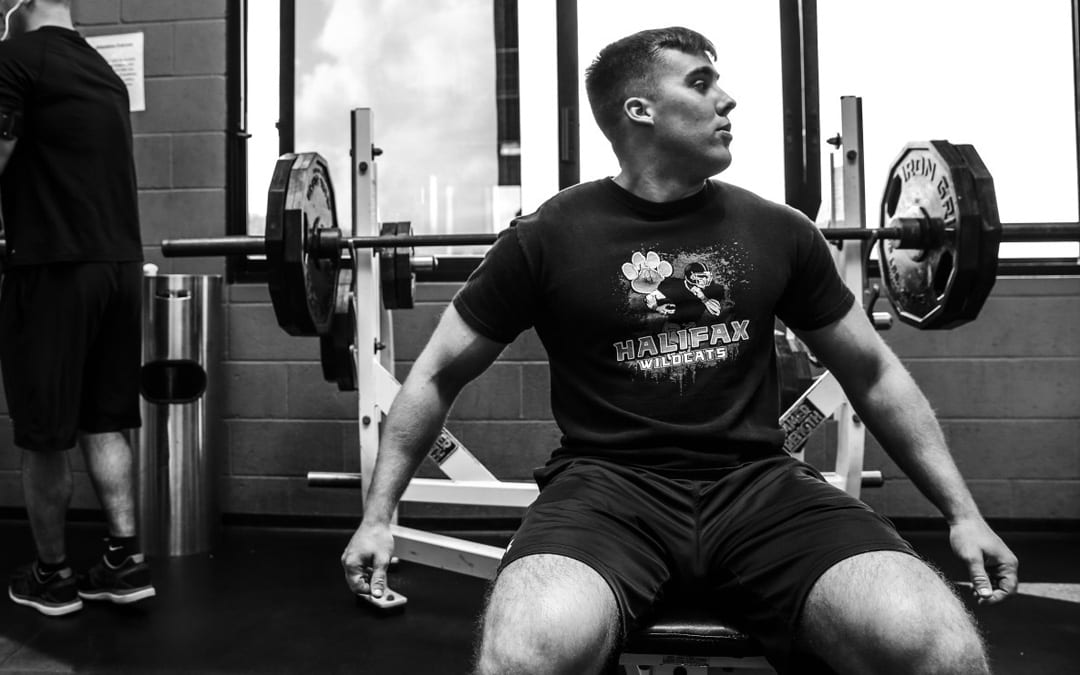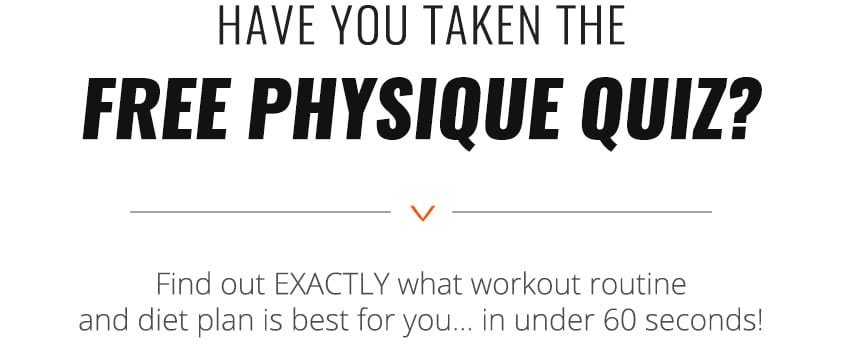Recently high intensity, low rep training has become more and more popular.
Guys are sticking close to the 5×5 range and maintaining a “powerbuilding” (powerlifting/bodybuilding hybrid) style of training. While this has many benefits, there are potential downsides to focusing purely on strength.
In this article I’ll break down 3 big reasons you should consider incorporating a minimal rest training day into your weekly lifting regimen (to complement your lower rep strength work… not replace it).
Note: I’m not trying to create a silly new buzzword here. By ‘minimal rest training’ I simply mean performing higher reps (about 3 sets of 10-12 reps) and keeping the rest periods relatively short (45-90 seconds).
#1. It Makes Low Rep Work Easier
You know that feeling you get right after doing a near-maximal sets of heavy squats for 5 reps? Like you just gave it everything you got and you’re about to pass out?
You can avoid that intense fatigue – that sometimes limits your ability to complete a tough set – by performing higher rep work with short rest periods. Doing this will take your conditioning to the next level, and make performing the lower rep work seem far easier.
Note: Conditioning here primarily means your maximum levels of oxygen consumption (VO2max) – see point #3 below for more on this.
While it won’t make a big impact on your actual strength levels, it will decrease your perceived levels of exertion. By this I mean that performing the lower rep work won’t seem so damn exhausting, so you’ll be able to maintain a higher level of focus and concentration all the way through the last rep of every set (e.g. squatting 225 for 3 sets of 10 with 60 sec rest will make 285 for 5 sets of 5 seem less taxing and intense).
You’ll also recover more quickly in between sets (your breathing and heart rate will return to baseline levels in less time) making subsequent sets easier from the get go. Even if your actual strength remains the same, this boost in focus and energy will allow you to push yourself a bit further while keeping your form in check… and this will ultimately lead to new PRs, more muscle mass, and increased strength.
#2. It Stimulates Additional Muscle Growth
The old-school bodybuilding belief that 8-12 reps is by far best for stimulating muscle hypertrophy clearly isn’t 100% accurate. There are plenty of powerlifters who’ve disproven this idea by getting huge while staying in the 1-6 rep range and focusing purely on strength.
However, this doesn’t mean that there aren’t any hypertrophy-specific benefits to doing 8-12 reps and keeping the rest periods short. It’s possible that higher rep ranges stimulate a greater degree of muscle growth by inducing more sarcoplasmic hypertrophy (growth of non-contractile “fluids” in the muscle cells). It’s also possible that higher rep ranges utilize more Type IIa muscle fibers, in contrast to the Type IIx fibers that are primarily recruited in low rep strength and power work.
Both of these claims are highly debated in recent years. However some studies have also demonstrated hypertrophy benefits to using shorter rest periods, citing an increase in serum Growth Hormone levels as the cause of these benefits (1). Other studies have shown no difference between short and long rest periods when it comes to long term gains in strength and muscle mass (2).
So – while none of these things are 100% conclusive (and let’s be honest: very few things are conclusive in the world of exercise science) – they offer enough potential benefits that anyone who’s training to get bigger and stronger would be silly to completely ignore them.
Plus, when you consider the benefits you’ll reap from the lower perceived levels of exertion that we covered above in point #1, it’s definitely worth your time to incorporate higher rep, minimal rest training into your lifting routine.
#3. It Provides Aerobic Health Benefits
By keeping your rest periods short throughout the entire training session, you’ll maintain an elevated heart rate. What this means for you is that you achieve an aerobic workout with minimal rest training that you do not get when working with lower reps and/or relaxed rest periods.
This will improve the overall health and conditioning of your heart and your lungs. Your heart will be able to pump more blood with less work, providing more oxygen and nutrients to your working muscle tissue. Your lungs will also be able to keep up with these increased demands, and they will supply oxygen (and remove CO2 and other wastes) from your blood at a higher rate.
On one hand, these improvements will enhance your overall levels of general health. On the other hand, they will translate as gains to your strength training program and ensure you’re only limited by the raw potential of your muscles… not just getting winded too early in your set or session.
Sample Training Session
Below I’ve listed a sample training session that incorporates these minimal rest training principles we’ve discussed.
By keeping the rest periods short, you won’t have as much time to recover. This means you won’t be able to use as heavy a weight as you normally would for the reps listed below. However, in conjunction with a solid training plan that focuses on increasing your strength levels in the lower rep ranges, a workout like this can help you break through plateaus and take your strength, size, and conditioning to the next level.
I’d recommend doing a workout like this once per week in addition to 2-3 days of lower rep strength work (depending on your current training experience and strength levels).
| Exercise | Sets | Reps | Rest |
|---|---|---|---|
| Bulgarian Split Squat | 3 | 10 | 60 sec |
| Incline Dumbbell Press | 3 | 10 | 60 sec |
| Pull-Ups | 3 | 10 | 60 sec |
| Lateral Dumbbell Raise | 2 | 12 | 45 sec |
| Skull Crushers | 2 | 12 | 45 sec |
| BB Curls | 2 | 12 | 45 sec |
| Decline Sit-Ups | 2 | 12 | 45 sec |
Note: Doing a ‘circuit training’ style workout will also accomplish many of these same benefits.
References
2. Ahtiainen, Juha P., et al. “Short vs. long rest period between the sets in hypertrophic resistance training: influence on muscle strength, size, and hormonal adaptations in trained men.” The Journal of Strength & Conditioning Research 19.3 (2005): 572-582.





Very good article David.Please allow me to ask you a question and a favor.How should i progress in this routine (example)?Could you make a video or article about how much rest (minutes) between sets of compound exercises, acessorry work and isolation exercises, to help increase strength and build muscle mass?
Thank you
PS: I do a full body routine 3/4 times week as you recommend
Hey Andre, I’ll do a video on that soon. In general, you can progress by adding 5 lbs to each exercise every week (or every other week if you’re closer to your limits and every week is too aggressive).
Was looking for something just like this, so great timing.
Nice Christian, glad to hear it.
Hey David how would you recommend doing deadlifts for basketball for great benefits? Trying to keep explosiveness and agility with power just wondering what your knowledge has to offer thanks.
Yes deadlifts are great for any athlete. Consider trap bar deadlifts as well.
Has anyone recently visited an art exhibition featuring South African art? Travel safety rules for colleges students. I’d love to hear about your impressions and favorite pieces !